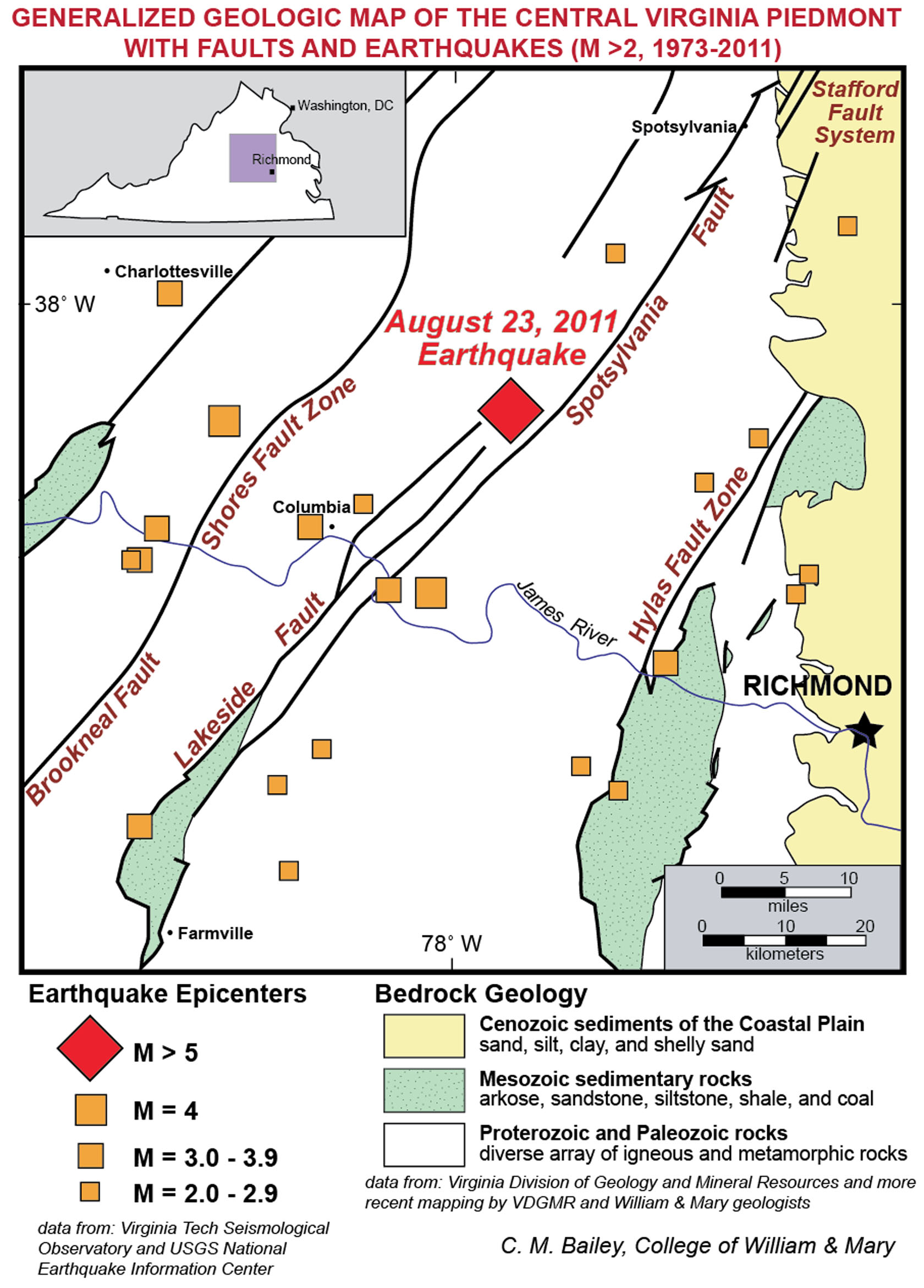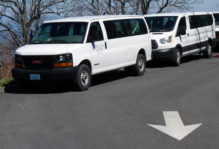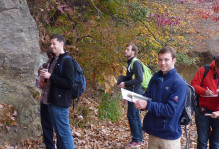It’s Not My Fault
This afternoon, our Geology faculty meeting was adjourned by a motion from the floor. A 20-second motion from the floor, but more to the point, a 20-second motion from the Earth. Virginia and the East Coast experienced a moderate, but widely felt earthquake at 1:51 p.m. (local time). It was quite a jolt.
The earthquake’s epicenter was about 60 km (~40 miles) northwest of Richmond, Virginia and occurred in the central Virginia seismic zone- an area of modest (or so we thought), but persistent seismic activity in the Piedmont. This region is laced with ancient faults that formed 200 to 300 million years ago when Virginia was at the frontline in an ugly collision between tectonic plates. I study these fault zones. Today’s temblor makes it clear that these faults are 1) not inactive and 2) have the potential to produce significant and damaging earthquakes. We have much to learn about the stresses that cause faults to slip this far from modern tectonic plate boundaries (in this case at the Mid-Atlantic Ridge some 3,000 km from central Virginia) and the hazards that these old, but restless, faults pose. It’s why we do research at William & Mary.
An earthquake presaging a hurricane- this could be quite a semester to study the Earth!
Comments are currently closed. Comments are closed on all posts older than one year, and for those in our archive.





That’s one of the more creative ways I’ve seen to get out of a faculty meeting 🙂 The building swayed a bit up here at UB, but nothing like the excitement down south!
Yikes Chuck! I read in the newspaper that the North Anna reactors were designed to handle a 6.2 quake based on the existing history of seismic activity when they were built. (As an aside I believe it was Dr. Godwin that discovered their placement on a fault line with group of students on a field trip back in the late 70s). So it is more probable given the latest quake to be wary of activity greater than 6.2?
Chuck, I thought of my friends in the Geo Dept the moment the earthquake ended. I was in Amelia, VA, slightly closer to the epicenter than Williamsburg. I was immediately confused by the reverse sense of motion detailed by the USGS but Callan Bentley’s blog did a good job of explaining that. Keep up the great work.
Okay- so it’s not your fault- but then which fault was it? It looks like that honking red box could belong to a couple different faults there. Is there any way to tell which fault slipped? (If so, how?)
I was a geology student with Dr. Godwin when he and Dr. Funkhouser from John Tyler Community College discovered the fault that divides all of the reactors at the power plant. There was quit a debate about what they found. Their findings resulted in an Atomic Energy Commission hearing. The commission fined the power company but approved the site because the faults were so old that they would probably never move.
All three reactors set directly on the fault. Perhaps the best way to describe each pit the reactors set in is to use a building as an example. A building is built with 50% of its foundation in very old rock and 50% of its foundation in much younger rock. The two different rocks are separated by a very wet crack/ fault.
Well, I suppose the Commission was right and the recent vibrations simply support its conclusion. The faults in this area are so old they will never move again.
However, if the Commission was wrong and the fault does move, I believe the reactor will no longer be parallel to the vertical axis. Based on the recent events in Japan, I doubt this will cause a problem.
I felt the quake at my office in Hartford, CT! Amazing! This was my second quake and both on the east coast. I noted that the epicenter was near Mineral, VA, where we once went on a field trip.
Felt it here at NSF in Arlington VA–I was pretty sure after a couple seconds that it was an earthquake (and not a bomb or explosion in the Metro) because the phases of movements were exactly what I remember from the textbooks — especially the last rolling waves. Found the NSF Geoscience Directorate staff outside while evacuating, who confirmed after some time via their smartphones that USGS confirmed it was an earthquake. Pretty exciting!
Keep up the good blogging. Makes for a nice diversion in the day.
I can honestly say that I never thought I would ever get to experience anything like that in my lifetime, at least not while sitting on my couch in Yorktown! It almost felt like I was rocking back and forth on a boat – but from the comforts of my own home. At first I thought it was a plane flying low overhead (making the walls vibrate), but when no sound followed and the house started shaking and the dog began to bark, I figured it was an earthquake! I figured it was probably one of those infrequent ones that we get due to the slump blocks & the CBIS, so I was very surprised when I pulled up the USGS website and saw the big red square that far away from here. Crazy!! Nothing like an earthquake and a hurricane in the same week!